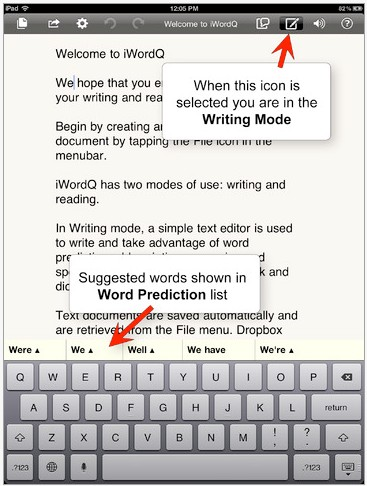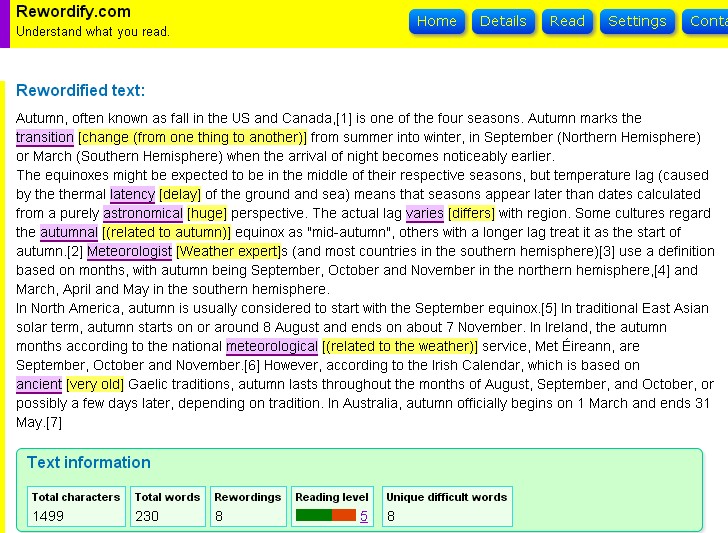 Connecting a ‘just right’ opportunity to engage in independent deeper thinking and a resource that allows that to happen is a challenge. When the two meet, it’s almost magical, especially when it can include students who struggle with reading and writing. For these, time is spent mostly on the mechanics of reading/writing, leaving little cognitive energy for deep thinking. While some resources require a strong commitment to mastering the tool (I’m thinking Kurzweil 3000 – still the master of all reading/writing supports – click here for information), others may offer similar experiences with less need for front-end learning.
Connecting a ‘just right’ opportunity to engage in independent deeper thinking and a resource that allows that to happen is a challenge. When the two meet, it’s almost magical, especially when it can include students who struggle with reading and writing. For these, time is spent mostly on the mechanics of reading/writing, leaving little cognitive energy for deep thinking. While some resources require a strong commitment to mastering the tool (I’m thinking Kurzweil 3000 – still the master of all reading/writing supports – click here for information), others may offer similar experiences with less need for front-end learning.
I wrote about Rewordify before in a previous post so I won’t go into the ‘how to’s here. Upon first blush, the online site may look rather simple. Dig a little deeper and you will find other layers worth exploring. Its basic premise is that any text can be pasted into the box and it will return a simplified version – very quickly I might add. One of the options deserves highlighting. Retaining the original word within the text, while offering a simpler form provides two things: increase of comprehension and increase of vocabulary. Sitting side by side, relationships between the difficult term and easier one is visually connected. As well, the integrated dictionary allows access to almost all of the words in the selection. And finally, the content can be printed and stored.
If you have not had a chance to explore this application, you may be surprised at how useful it can be for many students. It is free, though it requires access to the internet. (*Note: You do not need to register to use the site.)
Writing is another challenge that some of our students struggle to get their thoughts down on paper. While I believe that access to computers provides a wider range of choices, there is an application using ipads that offer a basic level of support with regards to word prediction and integrated reading (*this is not speech-to-text). For those of you already using the computer version (you’ll see this as similar), GoQ Software has developed an ipad version. Named iWordQ Ca (I’ve been waiting for the Canadian spelling and French is included!), the cost of $25 may be worth it.  It offers a very simple text editor (no images) for writing connected with anticipatory word prediction software. Definitions with examples, pop up with a tap of the finger. You can even add your own words into the lexicon thus including any specialized content vocabulary (think science, social studies). Typed words and sentences can be read back giving you a bit of quality control on the actual writing. Reading mode gives the writer a chance to do some more proofreading as well as revision. You might also use it for oral practice by speaking alongside the reading mode, if the end goal is a presentation. (*Note: Speech recognition is only found on the newer ipads. Need wifi access for this app to work.)
It offers a very simple text editor (no images) for writing connected with anticipatory word prediction software. Definitions with examples, pop up with a tap of the finger. You can even add your own words into the lexicon thus including any specialized content vocabulary (think science, social studies). Typed words and sentences can be read back giving you a bit of quality control on the actual writing. Reading mode gives the writer a chance to do some more proofreading as well as revision. You might also use it for oral practice by speaking alongside the reading mode, if the end goal is a presentation. (*Note: Speech recognition is only found on the newer ipads. Need wifi access for this app to work.)
For those of you who know me really well, you’re waiting for why I like this app over the many that are out there. That can be seen in the Export feature – multiple ways. Writing is a complex form of communication needing opportunities to engage in a variety of other formats. iWordQ Ca can save files in the app, send to a Dropbox account as well as open in many other apps such as Google Drive! Our Google Apps for Education accounts marry nicely with this process, thus allowing for the inclusion of collaboration and dialogue, images, hyperlinks, charts or slides. Oh, did I forget printing too?
![]() Our goals drive the use of any application. These apps add to the communication realm. However, I wonder if we should be asking wider questions such as… how will these serve to enhance deeper thinking processes, how will they create independence for the student, how will they bring connectedness and collaboration with classmates, how will they support self regulation?
Our goals drive the use of any application. These apps add to the communication realm. However, I wonder if we should be asking wider questions such as… how will these serve to enhance deeper thinking processes, how will they create independence for the student, how will they bring connectedness and collaboration with classmates, how will they support self regulation?
Hope you get a chance to explore these or cause you to ask more questions. I’d love to hear how you’re using these applications or other apps in your classroom.



